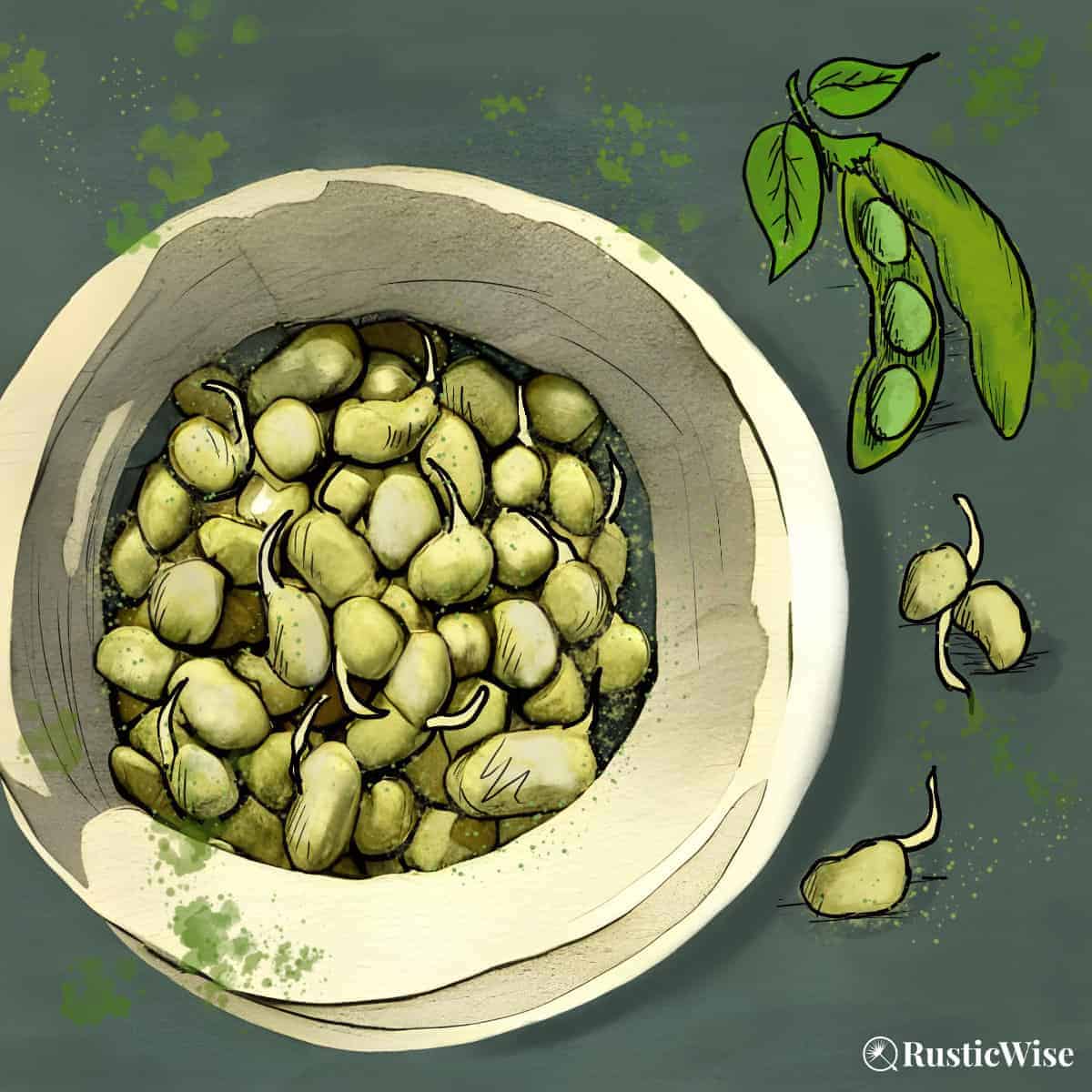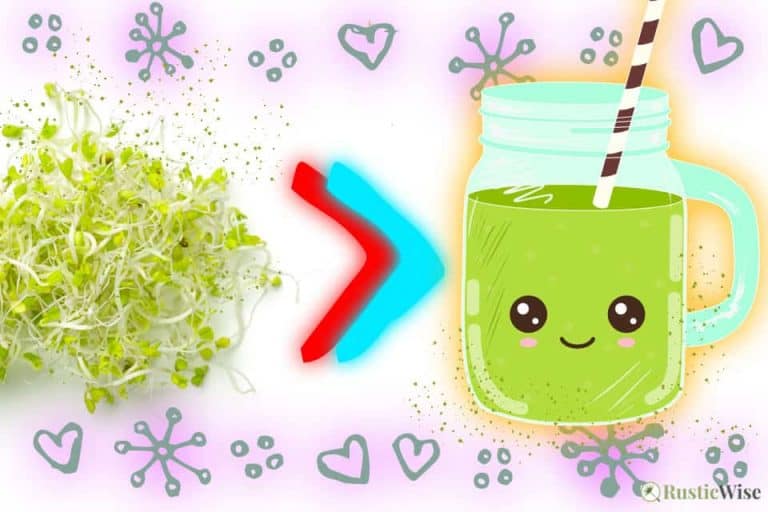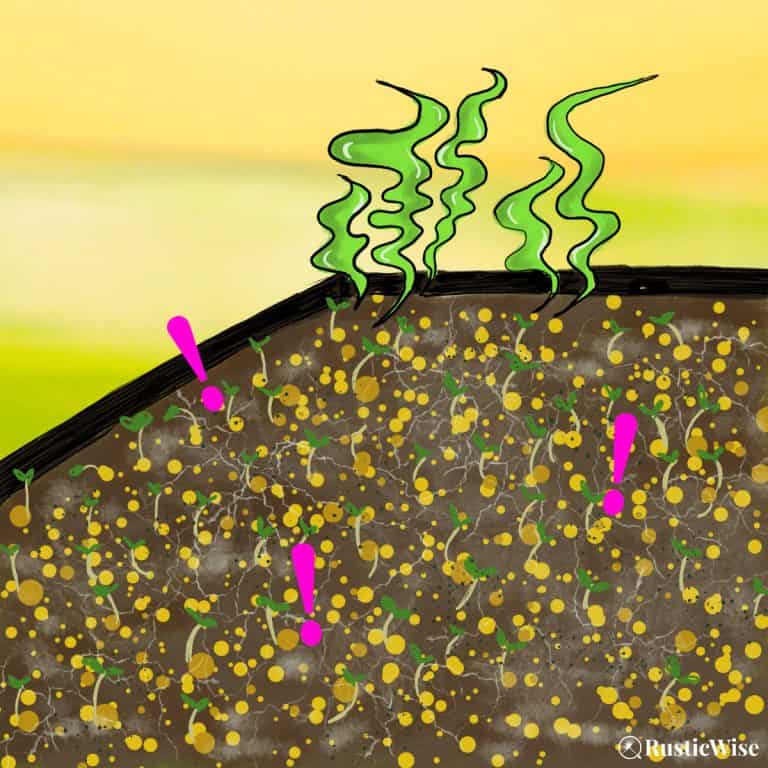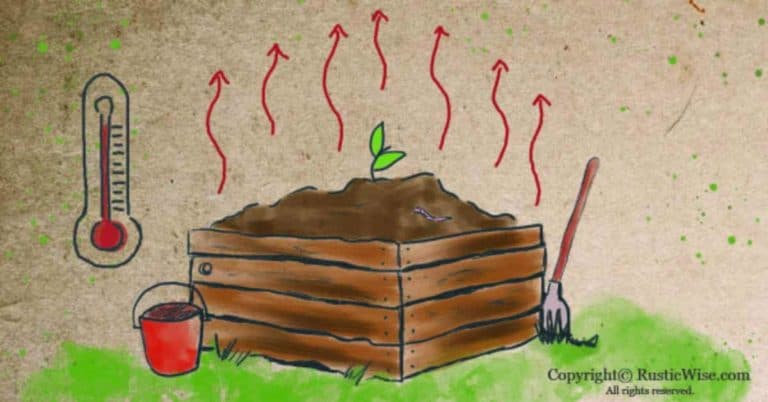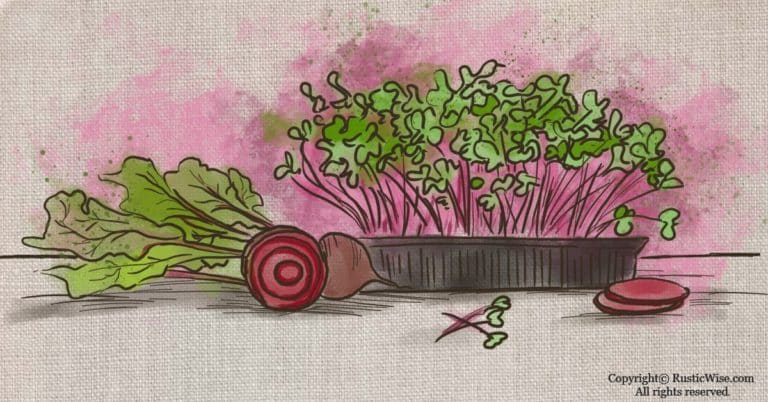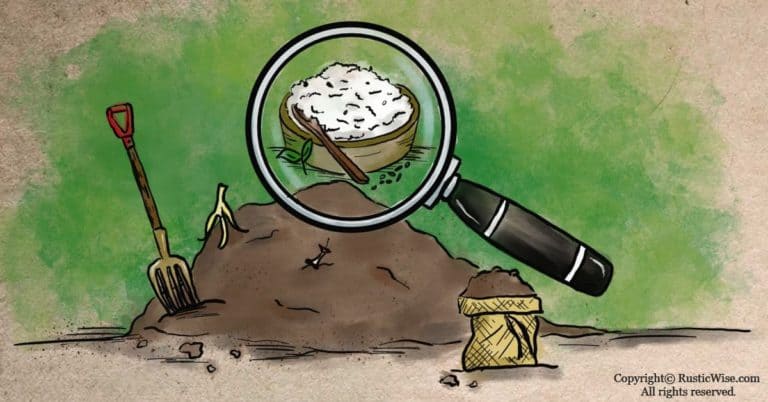How To Grow Soybean Sprouts at Home for a Protein Boost
Soybean sprouts are an excellent source of lean protein and fiber, plus they are delicious and easy to grow. They are also a good dietary supplement because they are high in B-vitamins as well as vitamin C.
You can grow soybean sprouts at home with very little effort, and the results are a healthy reward. All you’ll need is a glass mason jar, a sprouting lid (or a piece of cheesecloth or muslin cloth and a rubber band), plus a few quality seeds.
Sprouts are a simple way to add crunch and flavor to your food without adding much fat. Add them to a variety of different dishes for a nutritional boost.
Ready to get started? Let’s dig in!
A closer look at the soybean plant
The soybean plant (Glycine max) is an annual legume belonging to the Fabaceae (pea/bean) family. Sometimes this plant is also called soya bean, or soja bean. The edible seeds or pulses are one of the most important and in-demand crops grown in the world.¹
From soy sauce (made from fermented beans) to tofu, miso paste to soy milk, bean paste to Kongnamul (a spicy soybean dish in Korean cuisine) the pulses have a wide range of culinary uses.
While many of us are familiar with the beige colored variety, soy plants also produce brown, black, green, or yellow pulses, often with one to four seeds each pod.
The edible seeds harvested from the pods are one of the most affordable and nutritious sources of plant-based protein.
Let’s look at the composition of the pulses or seeds. Each pulse has 17 percent oil (fatty acids), and 63 percent meal—half of which comprises protein. The unique thing about soy seeds is that it has no starch, making it a great food for those with diabetes.¹
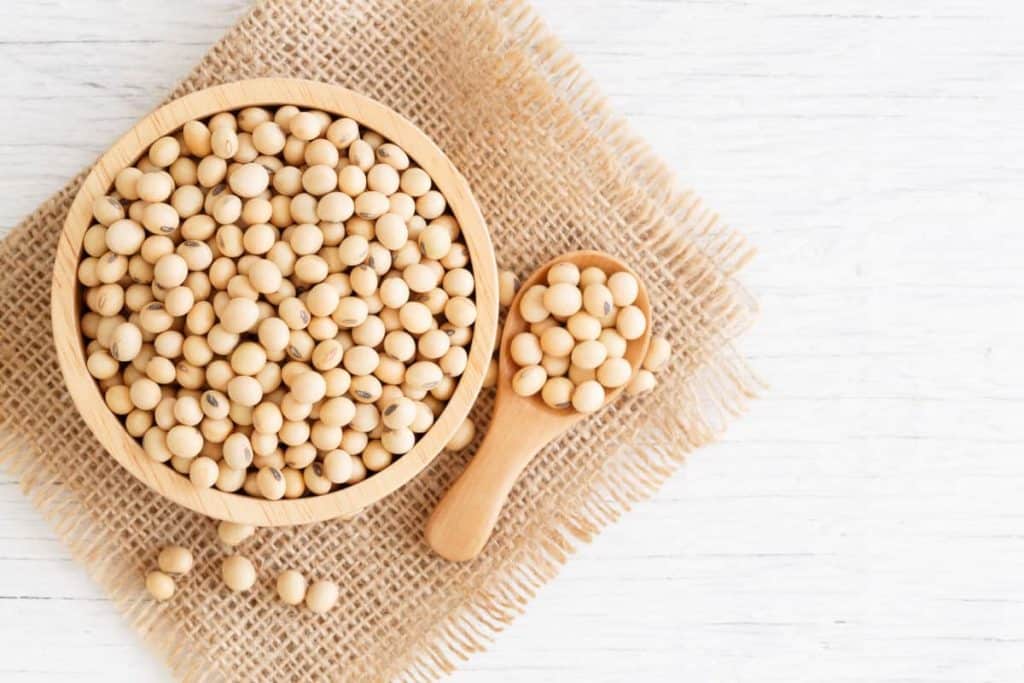
What are soybean sprouts, exactly?
Sprouted soybeans are simply the tiny roots that emerge from raw soybean seeds that have been soaked in water and then kept in controlled moist conditions to encourage growth.
The “tails” of the sprout are white with a crunchy texture.
Are soybean sprouts the same as mung bean sprouts?
No, while both soy and mung bean sprouts belong to the same legume family (Fabaceae) they are different. Soybeans are the pulses from the Glycine max plant, while beans sprouts come from the Vigna radiata plant.
But it’s easy to see why these two popular legumes are confused. Both sprout white tails, and share a similar taste and nutritional profile.
Where they differ is that mung beans typically have little yellow-green leaves that grow on the seed; bean sprouts also have thicker shoots.
Soybean sprouts have a larger, rounder seed.
Why grow sprouts?
Soybean sprouts are a quick and healthy source of protein and iron. These sprouts are ideal for anyone looking to add some more plant-based protein to their diet. They are also a great addition to salads and sandwiches, as well as other savory dishes.
The sprouting process has many benefits, such as making nutrients more available and easily digestible. It also enhances the flavor and aroma. Here are a few reasons to grow your own sprouts:
- Easier to digest: Many legumes, grains, and vegetables are hard to digest in their raw or unsprouted forms. Sprouting helps to increase the levels of insoluble fiber (which helps digest foods), and lower the levels of antinutrients.
- Boost nutrient intake: Many raw seeds contain antinutrients, including phytic acid. Antinutrients block the absorption of vitamins and minerals. But through the sprouting process, phytic acid levels are lowered, which enables nutrients to be more easily absorbed by the body. Eating soybeans in their natural, sprouted form provides you with all the health benefits that you can’t get from consuming soybeans in their cooked and/or un-sprouted form.
- Healthy and tasty: The fresh, crunchy texture of sprouts opens up many pathways to making regular foods more interesting. Sprouting also helps to enhance the flavor of many seeds such as moth beans.
Flavor profile of soybean sprouts
Soybean sprouts have a slightly earthy taste, which is often described as nutty and bean-y. You can eat fresh soybean shoots raw or cooked. Soybean sprouts are a light and healthy snack. When young, they are crunchy and flavorful.
These sprouts can be eaten raw in salads or wraps, or cooked when added to stir-fry dishes, stews and soups. Soy sprouts are a culinary staple in Asian cuisine.
Sprout safety: While most people can eat raw sprouts safely, vulnerable populations should cook them instead. This includes pregnant or breastfeeding women, very young children, the elderly, or those with compromised immune systems.
How many days does it take for soybeans to sprout?
Soybeans are usually ready to eat between 2 and 6 days. But the specific timing will vary with the temperature, humidity, and quality of beans being sprouted. Much of this germination period is hands-off—you’ll only need to spend a few minutes rinsing and draining the seeds twice a day.
Cooler room temperatures can slow down growth. So, if you’re sprouting in winter time, tack on a day or two.
Similar to other legume sprouts, such as mung beans, soybean sprouts taste sweet when grown to a shorter length and harvested earlier rather than later. Many soy shoots left to grow for too long taste bitter.
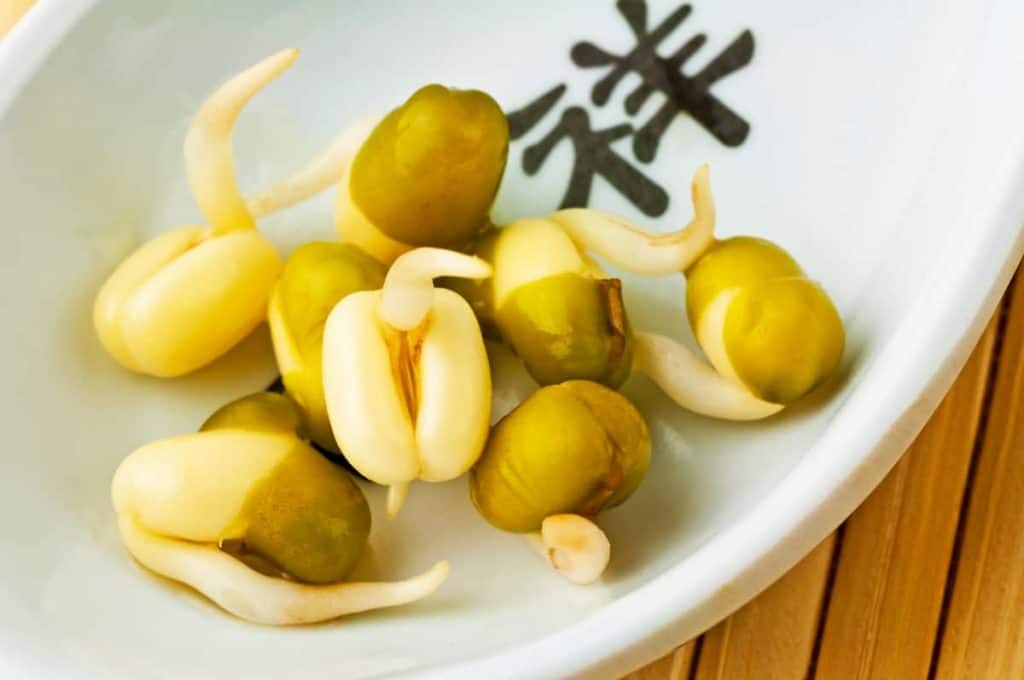
Here’s how to grow soybean sprouts at home
Growing soybean sprouts at home is one of the easiest and best ways to produce fresh, healthy produce, from jar to plate.
I’ll be showing you how to sprout soy using a regular mason jar. Note that this method of growing soybeans won’t produce long shoots you might be accustomed to seeing in the grocery store. Instead, you’ll grow shorter (but just as tasty and nutritious) sprouts.
If you’d like to see how to grow longer sprouts using a colander and a weight (to encourage more vigorous growth), check out our article on how to sprout mung beans two different ways. You can follow this method using soy rather than mung seeds.
And, if you’re new to sprouting, please check out our essential guide to sprouting at home.
Let’s gather a few supplies and let’s get sprouting!
What kind of soybean seeds to use for sprouting?
I highly recommend buying quality sprouting seeds for growing homegrown sprouts. This is because these seeds are specially selected to have “high germination” rates. They have also been tested to ensure they are free of foodborne pathogens such as E. coli and Salmonella.
Use only organic, raw, untreated soybeans for sprouting.
Growing notes: Soybeans are a bit of a fickle legume to sprout. If you notice that some of your beans don’t sprout, don’t panic. The pulses from the soy plant have lower germination rates than other seeds. (Another solid reason to invest in quality seeds!) Soy will produce roughly double the amount of seeds you sprout. For example, ½ cup of seeds will give you 1 cup of sprouts.
Supplies
- 1-quart glass mason jar
- Sprouting lid or piece of cheesecloth/muslin and rubber band
- ½ cup of quality soybean seeds
- Clean water (filtered)
Grow soybean sprouts step by step
Follow these simple steps and your sprouts will be ready to harvest in 2–6 days!
- Measure seeds: Portion out roughly ½ cup of seeds per quart jar.
- Inspect and wash beans: Do a quick inspection and toss out any damaged beans and other small stones or debris. Place the beans in the jar and rinse with clean cool water several times until the water runs clear.
- Soak: Fill the jar with clean water again and ensure the beans are fully submerged under water. Let them soak overnight, or for 8 to 12 hours. This soaking period helps to coax the seeds from dormancy. Place sprouting lid or fasten cheesecloth onto the jar with an elastic band.
- Drain: After the seeds have soaked, drain the water by tipping the jar upside down. (Instead of dumping this water, you can save it for your houseplants!) You could also rest it at a 45-degree angle inside a bowl for more thorough draining.
- Rinse and drain the chickpeas: After the initial soak, continue to rinse with cool water at least twice a day, or every 8–12 hours. Ensure you drain the jar well to prevent sitting water, which can encourage mold or bacterial growth. Keep the jar out of direct sunlight at room temperature.
- Harvest: When you’re growing legume sprouts, you can harvest as early as Day 2 or 3. Others prefer to wait until Day 6. I don’t recommend growing much longer than this, or you’ll end up with bitter tasting soy sprouts. When harvesting, give your sprouts one last rinse under cold water in a colander to remove any seed hulls or other residue. Allow to drain fully, and pat dry. Keep in the refrigerator.
How to store sprouts
Once your sprouts have drained fully, and don’t feel moist, you can store them in the refrigerator. (Any moisture on sprouts will make them spoil quicker.)
Sprouts are best consumed within 2 to 3 days. Store in the fridge up to a week in a sealed glass container, plastic bag, or Tupperware. Check out our article on tips for keeping bean sprouts fresh for longer.
I find that storing my sprouts in a reused yogurt container with a few holes drilled in helps to keep them fresh for longer. The key is finding the sweet spot between giving them a bit of air, but not so much that they dry out.
Soybean sprouts nutrition
There’s a reason this edible pulse is a vital crop worldwide—it’s chock-full of protein and dietary fiber. Soy is considered a complete protein and contains all nine essential amino acids.²
Here are some nutrition facts of this popular legume.
Just 1 cup of raw sprouted soybean seeds is 85 calories:³
- Protein: 9.2 grams or 18 percent Daily Value (DV)
- Carbs: 6.7 grams or 2 percent DV
- Fat: 4.7 grams or 6 percent DV
- Fiber: 0.8 grams or 3 percent DV
It’s also a great source of vitamins and minerals:
- Vitamin C: 12 percent DV
- Vitamin B1 (Thiamin): 20 percent DV
- Vitamin B9 (Folate): 30 percent DV
- Calcium: 4 percent DV
- Iron: 8 percent DV
- Magnesium: 12 percent DV
- Copper: 33 percent DV
- Manganese: 21 percent DV
According to the Harvard T.H. Chan School of Public Health, soybeans also provide other health benefits:²
- Promotes a healthy heart by helping to lower levels of “bad” cholesterol and lowering the risk of heart disease.
- May help women with hot flashes during menopause.
- May help prevent prostate cancer.
- Shows some promise in boosting memory and cognitive function.
Are soybeans right for you?
Soy contains high levels of isoflavone content. Isoflavones are a special plant-based estrogen, or phytoestrogen, which work similar to regular human estrogen, albeit with muted effects.
These isoflavones are a source of much controversy as there are many conflicting studies, with some saying they may ward off certain cancers, while others fear it may cause some illnesses.
Harvard Health says the following, “Soy is a nutrient-dense source of protein that can safely be consumed several times a week, and probably more often, and is likely to provide health benefits—especially when eaten as an alternative to red and processed meat.”²
The takeaway: Talk with your doctor to see if eating a diet rich in soy is right for you.
Ways to use soybean sprouts
- Use as a mung bean sprout alternative. These two legumes share a similar texture and flavor profile, with soy having a slightly stronger bean-y flavor.
- Add them raw to wraps, salads, and sandwiches for a fresh, nutty crunch!
- Sprinkle into soups or stews during the last few minutes of cooking.
- Enjoy them in stir-fries and curries.
- Try pickling them!
👉 If you like this post, see our Essential Sprouting Guide: How To Grow Sprouts at Home. 🌱
Would you like more timeless tips via email?
Fun tips to help you live an independent, self-sustaining lifestyle. Opt-out at any time.


References
- Britannica, soybean plant, https://www.britannica.com/plant/soybean. Accessed October 2022.
- Harvard T.H. Chan School of Public Health, Straight Talk About Soy, https://www.hsph.harvard.edu/nutritionsource/soy/. Accessed October 2022.
- MyFood Data (USDA), Soybean Sprouts, https://tools.myfooddata.com/nutrition-facts/169284/wt9. Accessed October 2022.

Author: Josh Tesolin
Josh is co-founder of RusticWise. When he’s not tinkering in the garden, or fixing something around the house, you can find him working on a vast array of random side projects.

